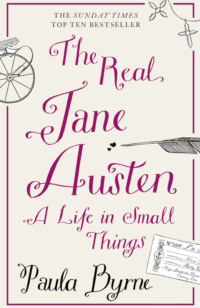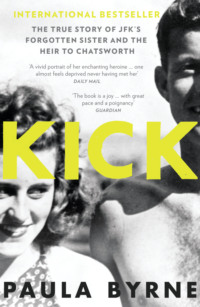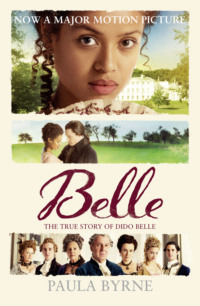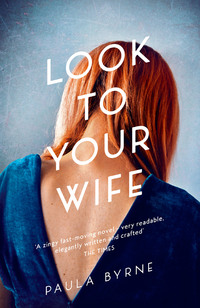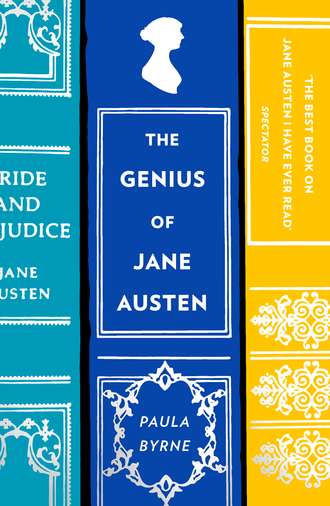
Полная версия
The Genius of Jane Austen: Her Love of Theatre and Why She Is a Hit in Hollywood
It is evident throughout her work, distinguishable even from the early reference to Lewis and Quick, that Jane Austen was particularly attuned to the discrepancies between rank and manners within the tightly circumscribed social structure of her world. That understanding was shaped and informed by her interest in the drama. Her special interest in social metamorphosis, with its comic interplay between high and low types, was stimulated by the influence of eighteenth-century comedy.
The year 1814, in which Mansfield Park was published, saw the birth of a new age in the English theatre. Between the years of Kean’s birth in the late 1780s and his death in 1833 the theatre underwent unprecedented change. The two patent houses had been closed by catastrophic fires in 1808–9 and had then been rebuilt on a more lavish and grander scale than had been seen before. Kemble’s raised prices had incited sixty-seven nights of rioting in Covent Garden until he was forced to capitulate to the demands of the rioters. Edmund Kean and Eliza O’Neill had taken over the mantle of Kemble and Siddons, bringing to the stage a new style of intuitive acting characteristic of the ‘Romantic’ era. The rise of the illegitimate theatres and the impact of a ‘theatrical revolution’ in the advent of Kean (cemented by the praise of the cockney young literary radicals, Keats, Leigh Hunt and Hazlitt) marked a new age of vitality in the theatre.
This tumultuous period in the history of the theatre also happened to coincide with Jane Austen’s own birth and death. She attended the first performances of Kean and O’Neill, witnessed the transformations taking place in the theatre, and remained in touch with its nuances and foibles. Austen’s interest in the drama has been overlooked in the persistently mistaken notion that she was morally opposed to the theatre. Yet this assumption is in flagrant defiance of the evidence of the letters.
In the early part of 1814, in the middle of negotiations for the publication of Mansfield Park, and in the space of four days, Austen visited the professional theatre three times to see Kean, Jordan and Stephens. In the same short period she wrote of two more excursions to see Kean again and also his rival Young. It is a striking irony that the completion of Mansfield Park, the novel that has been viewed almost universally as Austen’s rejection of the theatre, coincided with a particularly busy theatre-going period for the author.94
Judging by Austen’s earlier theatre-going periods, visits in such close proximity were not unusual. Her visit to Henry and Eliza in 1811 was planned with the Lyceum on Thursday, followed by two more visits to Covent Garden on Saturday and Monday. In 1813 she was found at the playhouse two nights in a row. This was by no means untypical and is an acute reminder of the frequency with which the Georgians visited the playhouse. On average, there were about 180 nights each season on which the patent houses offered the play-going public some kind of dramatic entertainment. The two winter patent houses alone could command a total of four hundred performances per season.95 Whenever Jane made extended visits to town, she seems to have taken advantage of Henry’s close connections with the theatre.
Theatre in the late Georgian period became an essential part of fashionable middle-class life.96 One of the consequences of the system of stock companies was that the audience became familiar with the same actors, seeing them in a variety of different roles and plays of all types, coming to know not only their styles of acting, but the details of their private lives.97 The proliferation of stage-related literature meant that readers were able to know the intimate details of actors’ lives. In the words of one historian: ‘The public’s appetite for news, gossip and scandal about the stage was insatiable, its sense of intimate acquaintance with actors unique. A successful player could only have a public private life.’98 To sate the audience appetite for theatre there were actors’ diaries, journals, memoirs, biographies of playwrights and managers, histories and annals of the theatre, periodicals, and magazines. Between 1800 and 1830 some one hundred and sixty different periodicals devoted exclusively to the theatre came into existence in Britain.99
William Hazlitt, in the preface to his A View of the English Stage, describes the allure of the theatre in late Georgian England: ‘the disputes on the merits or defects of the last new piece, or a favourite performer, are as common, as frequently renewed, and carried on with as much eagerness and skill, as those on almost any other subject’.100 With Hazlitt’s words in mind, one of the most striking features of Austen’s letters is her discussion of the theatre as a part of everyday conversation, to be written about as she writes about other quotidian matters like shopping and gossip.
Austen’s letters are a neglected historical source for her interest in and love of the theatre. The fundamental place the theatre occupied in her life is revealed in the manner in which it can be joked about, admired, even be taken for granted. Her mock-insult to Siddons, ‘I could swear at her for disappointing me’, reflects the way in which the sisters often consoled one another for missing particular performers. Her tantalising observation that Mrs Edwin’s performance ‘is just what it used to be’ speaks a language of intimate theatrical knowledge that we can only begin to guess at.
There is something paradoxically casual and yet essential about the way that Austen ‘converses’ about the theatre. At times her letters reveal a striking language of precision and economy in respect to the drama; details of the seating arrangements are often as important as descriptions of the plays, sometimes a cursory remark such as ‘no skill in acting’ is enough for the sisters and nieces, who are in tune with one another; no further elaboration is necessary, but it still needs to be said, because the interest is there between them. That interest lasted throughout Jane Austen’s life and, as I will demonstrate, had a profound effect on her fiction.
PART TWO
The Theatre and the Novels
She partook largely in all the best gifts of the comic muse
Henry Austen, ‘Biographical Notice’ of his sister
4
Early Works
The impact of private theatricals and the vitality of the professional theatre in the late Georgian period gave Jane Austen a comprehensive and longstanding interest in the drama. From her earliest attempts at play-writing to the systematic incorporation of quasi-theatrical techniques into her mature novels, the influence of the drama rarely left her. Throughout the canon there is an abundance of resonances and allusions to eighteenth-century plays, many of which the author expected her readers to recognise. It is, however, in Austen’s juvenilia, written to amuse her family, and not intended for public consumption, where the marks of her early exposure to the drama can most clearly be seen.
Jane Austen’s chief literary tool in her early works was the art of burlesque.1 In this she was influenced by her brothers’ Oxford literary journal, The Loiterer, which ran for sixty numbers between 1789 and 1790, and made a duty of burlesquing ‘novel slang’ and the absurdities of popular fiction. Henry Austen’s burlesque of the literary conventions of courtship, entitled ‘Peculiar Dangers of Rusticus from the Attacks of a Female Cousin’, is particularly striking.2 In this parody of a sentimental novel, the unlucky hero is besieged by the attentions of his cousin. The hero of Henry’s sentimental tale is lured into seducing his fair cousin: ‘She begged me for the loan of an arm. My arm she accordingly took, and in the course of all her frights and false steps, pinched it so hard and so often, that it is still quite black and blue, through sheer tenderness.’ Following his cousin’s admission of loving ‘cropt Greys to distraction’, he is a lost man:
There was no standing this … I thought she never looked so much like an angel. In short, I know not where my passion might have ended, had not the luckiest accident in the world at once roused me from this rapturous dream of fancied bliss, to all the phlegm of cool reflection and sober reality. A sudden puff of wind carried off two luxuriant tresses from her beautiful Chignon, and left her (unconscious to herself) in a situation truly ridiculous. The delicate thread of sentiment and affection was broken, never to be united.3
Henry Austen’s burlesque technique of juxtaposing a serious and sentimental reflection with a quasi-farcical action is echoed throughout Jane Austen’s Volume the First. Also typical is the taste for absurd detail and witty aphorism. Henry’s tale ends with a description of the hero’s unsuccessful attempts to be rid of his cousin; getting ‘completely cut’ and spilling lemonade over her dress prove fruitless: ‘But she wouldn’t be provoked, for when once a woman is determined to get a husband, I find trifling obstacles will not damp her hopes or sour her temper.’4
The Loiterer was not the only influence on Jane Austen. As has been shown, she was writing burlesque sketches at least two years before its publication, during the time of the Steventon private theatricals.5 James and Henry’s taste for satirical comedies ensured that she was exposed at a very early age to those masters of burlesque plays, Henry Fielding and Richard Brinsley Sheridan. Fielding’s Tom Thumb: or The Tragedy of Tragedies (1730) and Sheridan’s The Critic (1779) were two of the most successful examples of eighteenth-century theatrical burlesque. Jane Austen alludes to both plays in her juvenilia.
Fielding had been hailed as a master of political satire after the commercial success of his theatre burlesques, The Author’s Farce, Tom Thumb, Pasquin and The Historical Register. His repeated attacks on the Whig government came to a head in The Historical Register, where he was more openly hostile to Sir Robert Walpole than he had been in his earlier burlesques. The success of this play finally provoked the government into passing the Theatre Licensing Act of 1737, whose long-term repercussions were to include the growth of closet drama and a transfer of creative energy from the theatre to the novel.6 Fielding gave up writing and turned to the law, until the publication of Richardson’s Pamela (1740) provoked him into writing again. Once again he used burlesque to ridicule literary pretension and hypocrisy: Shamela and Joseph Andrews are different burlesques of the same book.
Fielding’s theatre burlesques relied upon a subtle blending of theatrical and political satire. Tom Thumb: or The Tragedy of Tragedies, which the Austens acted at Steventon on 22 March 1788, was chiefly a parody of contemporary tragedy, although Walpole was implicitly satirised in the portrayal of Tom Thumb, ‘the great man’. It was intended to be ludicrous and nonsensical. The original audience was delighted by the incongruity of a ‘tragedy’ designed to make them laugh. Fielding was satirising the way in which modern tragedy was unintentionally absurd.
Set in King Arthur’s Court, Fielding’s travesty ruthlessly caricatured conventional heroic tragedy. The play contains the full panoply of Neoclassical tragedy, but the superhuman giant-killing hero, Thumb – ‘whose soul is as big as a mountain’ – is a midget. The other ‘noble’ personages of the court are just as ridiculous. The royal couple are a quarrelsome pair. The noble King Arthur is bullied by his wife Dollalolla, a queen ‘entirely faultless, saving that she is a little given to drink’, and in love with the captive queen, Glumdalca, a giantess, who is in love with the dwarf, Thumb. The romantic sub-plot common in heroic tragedy is also parodied in the love triangle of the gluttonous Princess Huncamunca and her rivals, Lord Grizzle and Tom Thumb. The King’s loyal courtiers, Noodle, Doodle and Foodle, are foolish and inept, and the play ends with a ludicrous massacre of all the characters.
Burlesque appealed to Austen, for her main concern in her early writings was to excite laughter. She approved of its uncomplicated aim to raise laughter by comic exaggeration and from the sheer absurdity of language and image. But, like Fielding, she was aware that parody acts as a form of criticism, a way of elucidating the absurdities and limitations of a particular art form.
Austen shared Fielding’s irreverence for literary and artistic convention. Her characters are no more heroic than Fielding’s, and often as physically odd or repulsive. In a deliberate echo of Tom Thumb, Austen set her stories in villages called Pammydiddle and Crankhumdunberry. Like Fielding, she took the clichéd situation and rendered it absurd. In ‘Frederick and Elfrida’ she parodied the novelistic convention of depicting two antithetical sisters, one beautiful and foolish, the other ugly and clever. In this topsy-turvy world it is the ugly Rebecca who charms the hero:
Lovely & too charming Fair one, notwithstanding your forbidding Squint, your greazy tresses & your swelling Back, which are more frightful than imagination can paint or pen describe, I cannot refrain from expressing my raptures, at the engaging Qualities of your Mind, which so amply atone for the Horror, with which your first appearance must ever inspire the unwary visitor. (MW, p. 6)
In Tom Thumb, Princess Huncamunca is confounded by the ugliness of Glumdalca: ‘O Heaven, thou art as ugly as the devil.’ Queen Dollalolla, meanwhile, is permanently drunk:
Oh, Dollalolla! do not blame my love;
I hoped the fumes of last night’s punch had laid
Thy lovely eyelids fast.7
Just as Fielding’s heroes are characterised by their unheroic qualities, such as physical ugliness, drunkeness and violence, Austen’s earliest characters are also drunkards, murderers and adulterers. Jealous sisters poison each other, landowners beat their workers with a cudgel on a whim, and children bite off their mother’s fingers. Austen’s letters suggest that she long continued to find physical ugliness, illness and death amusing.8
Конец ознакомительного фрагмента.
Текст предоставлен ООО «ЛитРес».
Прочитайте эту книгу целиком, купив полную легальную версию на ЛитРес.
Безопасно оплатить книгу можно банковской картой Visa, MasterCard, Maestro, со счета мобильного телефона, с платежного терминала, в салоне МТС или Связной, через PayPal, WebMoney, Яндекс.Деньги, QIWI Кошелек, бонусными картами или другим удобным Вам способом.




